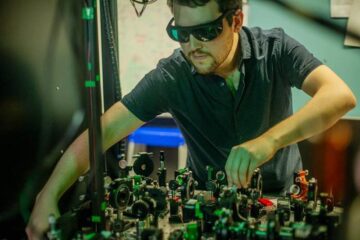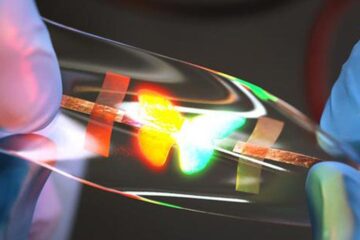As probiotics use grows for gut health, VSL#3 has designations for specific GI issues

As clinical studies continue to validate the use of probiotics to help promote general gastrointestinal health, a growing U.S. market1 for probiotics indicates that the U.S. healthcare community and consumers alike are recognizing the value of these beneficial microorganisms.
However, because most probiotics are classified as dietary supplements, directing patients to the best probiotic for their individual needs can be challenging. And, as the category matures, one probiotic preparation — VSL#3 — stands apart and ahead because it is not a supplement; it has been classified as a refrigerated medical food designated for the dietary management of three major gastrointestinal conditions: Ulcerative Colitis, Ileal Pouch and Irritable Bowel Syndrome (IBS).
The World Health Organization (WHO) defines probiotics as “live microorganisms which, when administered in adequate amounts confer a health benefit to the host.” But research also shows that probiotics are not “one size fits all.”
“As the amount of research in the field of probiotics increases, clinical evidence continues to indicate that not all probiotics are the same; probiotic activity is strain-specific and unique, and some strains can have antagonistic or synergistic activities when mixed together,” said Marc Tewey, vice president, commercial operations, at Sigma-Tau Pharmaceuticals, Inc., manufacturer of VSL#3. “VSL#3 is formulated with a precise mix of eight proprietary strains of live bacteria, and the result is a probiotic medical food so potent, it must be used under medical supervision and must be shipped and sold as a refrigerated product.”
What are medical foods?
According to the FDA, medical foods are:
Specially formulated and processed products for the partial or exclusive feeding of a patient by means of oral intake or parenteral tube feeding
For dietary management of patients with special medically determined nutrient requirements that cannot be achieved by diet alone
Designed to provide nutritional support specifically modified for the management of the unique nutrient needs
Only for use under medical supervision
Only for a patient receiving active medical care on a recurring basis for the use of the medical food
The VSL#3 line of products contain between 112.5 billion and 900 billion live, colony-forming units (CFU), the large numbers of which make them the most potent brand of probiotics available and require the product to be refrigerated. VSL#3 utilizes a synergistic combination of diverse strains of bacteria including: Streptococcus thermophilus, Bifidobacteria longum, Bifidobacteria infantis, Bifidobacteria breve, Lactobacillus acidophilus, Lactobacillus plantarum, Lactobacillus paracasei and Lactobacillus delbrueckii subsp. Bulgaricus. Clinical studies using VSL#3 and published in notable journals, such as Gut, Gastroenterology and the American Journal of Gastroenterology have indicated that it colonizes the GI tract with beneficial bacteria, and in doing so, forms an intestinal barrier, which may help protect the GI tract and promote the absorption of nutrients.
“One of the main goals of physicians whose patients are living with these chronic diseases is to lengthen the periods between symptom 'flares' as much as possible,” said Tewey. “Studies show that incorporating the use of this type of dietary therapy alongside traditional drug therapies can be an effective step in achieving that goal for many who suffer from these debilitating conditions.”
VSL#3 is one of the few probiotic preparations supported by Level 1 (double-blind, placebo-controlled) scientific data, and has been the subject of a collection of more than 80 studies that have demonstrated its efficacy, specifically in the dietary management of IBS, Ulcerative Colitis and Ileal Pouch. It is the only probiotic recognized as an effective tool in the dietary management of pouchitis by the American College of Gastroenterology2 and by the Cochrane Review3 for the treatment and prevention of pouchtis after ileal pouch-anal anastamosis for chronic ulcerative colitis.
VSL#3 products are available online at www.vsl3.com, as well as behind the pharmacy counter at pharmacies nationwide. They come in three formulations: VSL#3 DS prescription-only packets, VSL#3 OTC packets and VSL#3 OTC capsules. Physicians and pharmacists interested in additional information about the product can call 1-866-634-2765 and consumers may call 1-866-GET-VSL3 or visit www.vsl3.com for more information.
1 Source: “U.S. Digestive Health Enzymes, Prebiotics & Probiotics Market (2010 – 2015)” Markets and Markets, July 4, 2011
2Kornbluth, A, Sachar DB. Ulcerative colitis practice guidelines in adults: American College of Gastroenterology, Practice Parameters Committee.; Practice Parameters Committee of the American College of Gastroenterology. AM J. Gastroenterol. 2010 Mar; 105(3):501-23
3Holubar SD et al., (Review) The Cochrane Library 2010, Issue 6.
Media Contact
More Information:
http://www.rlapr.comAll latest news from the category: Health and Medicine
This subject area encompasses research and studies in the field of human medicine.
Among the wide-ranging list of topics covered here are anesthesiology, anatomy, surgery, human genetics, hygiene and environmental medicine, internal medicine, neurology, pharmacology, physiology, urology and dental medicine.
Newest articles

Combatting disruptive ‘noise’ in quantum communication
In a significant milestone for quantum communication technology, an experiment has demonstrated how networks can be leveraged to combat disruptive ‘noise’ in quantum communications. The international effort led by researchers…

Stretchable quantum dot display
Intrinsically stretchable quantum dot-based light-emitting diodes achieved record-breaking performance. A team of South Korean scientists led by Professor KIM Dae-Hyeong of the Center for Nanoparticle Research within the Institute for…

Internet can achieve quantum speed with light saved as sound
Researchers at the University of Copenhagen’s Niels Bohr Institute have developed a new way to create quantum memory: A small drum can store data sent with light in its sonic…





















